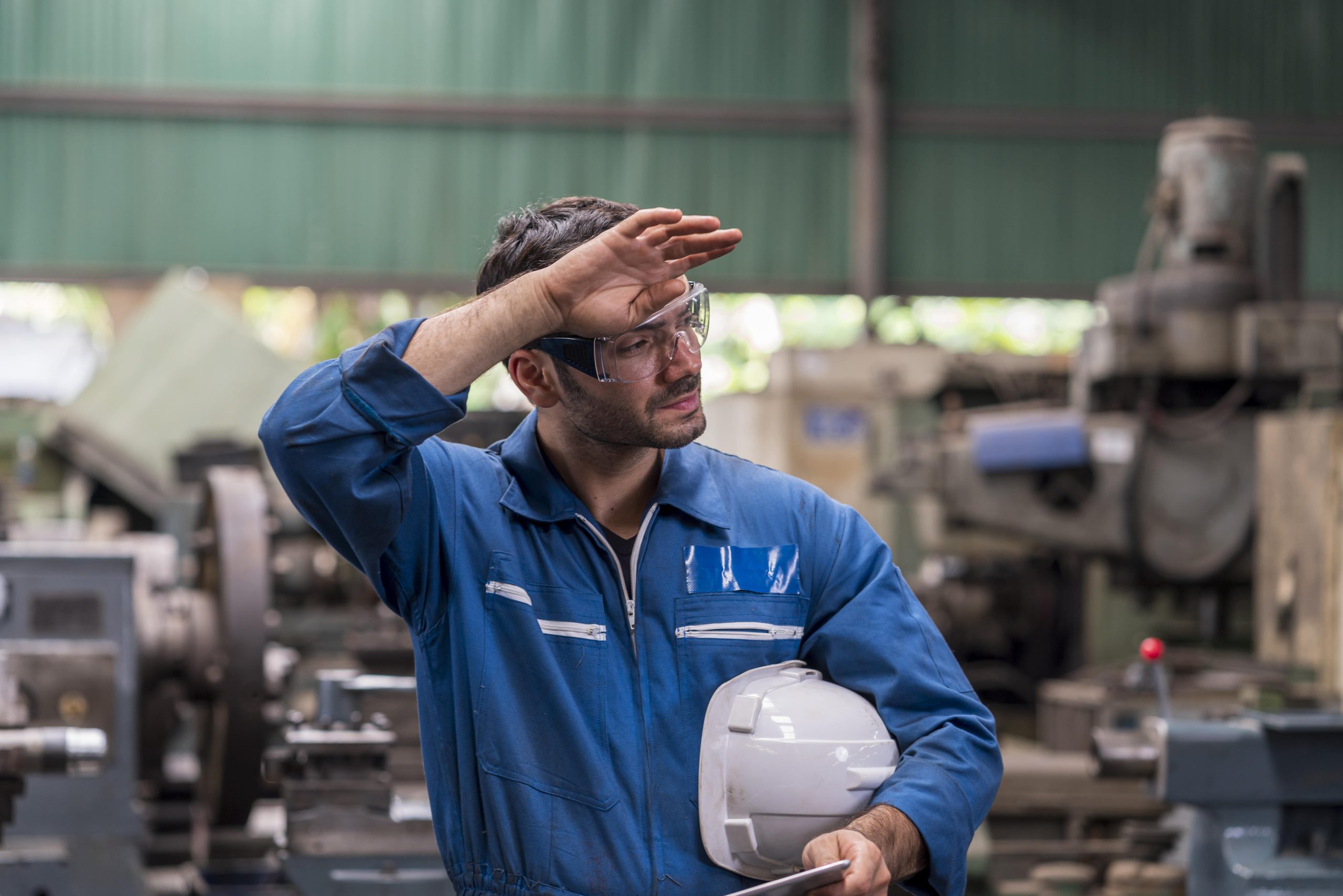From an automated loom in 1896 to a mechanism that can be perfectly applied in today’s factories: the Japanese inventor Sakichi Toyoda developed the principle, which was later further refined by Shigeo Shingo. This invention is now known as the Jidoka principle, which focuses on producing defect-free products. But what exactly is Jidoka, and how can you apply the Jidoka principle in a factory? We will guide you through it!
What does Jidoka mean?
“Stop the line!”
The Jidoka method was developed to prevent a cascade of production errors. Translated from Japanese, Jidoka means ‘building quality into the process’. It ensures that machines and processes are designed to automatically stop as soon as a deviation, error, or defect is detected. When a problem is identified, the production process is immediately halted – by either a person or a machine – to prevent a series of errors. Production only resumes once the root cause has been addressed. Jidoka perfectly complements Lean practices. Implementing Jidoka in a Lean environment can have the following benefits:
- Ensured quality: Errors are detected and resolved immediately.
- Waste prevention: Costly operations on defective products are avoided.
- Process improvement: Operators are actively involved in investigating and resolving the root cause of problems.
What are the laws of Jidoka?
The Jidoka method is built on a set of guiding principles, or ‘laws’. Following these laws supports the Jidoka Lean approach in the production environment and is essential for achieving optimal results. Below, we explain the key laws of Jidoka.
Automatic defect detection
The first law of Jidoka focuses on automatically identifying deviations in the production process. Machines, sensors, or visual inspection systems can independently determine whether a deviation from the standard has occurred. This could involve an incorrect dimension, a missing component, or an assembly performed in the wrong sequence. The main goal of this Jidoka law is to detect problems as early as possible – preventing errors from accumulating or going unnoticed.
Automatic assembly line pause and defect notification
Once a deviation is detected, the second law comes into effect. The assembly line is automatically stopped, and a notification is issued. This notification can be visual – such as blinking lights or on-screen alerts – but can also be an audible signal, like an alarm, or a digital alert in a production system. Defective products are therefore prevented from moving to the next step and remain at the location where the problem was detected until it is resolved. The stop can occur fully automatically or through a manual action by an operator (for example, pressing a stop button). The purpose is to ensure that everyone in the vicinity immediately knows that action is required and where the problem is located.
Human corrective intervention
The third law emphasizes that while technology can detect issues and stop the process, human intervention is essential to actually resolve the problems. Once the line has been stopped, the operator or team analyses the root cause of the deviation. Based on their findings, a repair can be carried out, a component replaced, or a process adjusted – all to prevent the issue from recurring in the future. The 5 times why method is often used here, as well as Root Cause Analysis.
Defect prevention
The final Jidoka law focuses on fully eliminating, or preventing, defects from occurring in the future. While the first three laws primarily react to errors, this step is about proactive measures. This can involve designing processes, products, and tools in a way that makes the error impossible to recur in production. By integrating prevention into both design and operations, the likelihood of malfunctions, quality issues, and waste is greatly reduced. This approach is also known as Poka Yoke.
How to introduce Jidoka in your factory
To implement the Jidoka method in an organized and manageable way, it is recommended to start with one specific process or production line. Following the laws of Jidoka, you then analyse where defects occur and how they can be detected early. The approach works as follows:
- Identify the deviation, error, or defect.
- Stop the production line – “Stop the line!”
- Carry out the corrective actions necessary to restart the process without issues.
- Investigate the root cause and implement a measure to prevent the cause from occurring in the future.
In practice, steps 1 and 2 are increasingly being automated using the right technologies. Steps 3 and 4, however, still require human analysis, experience, and action. Supportive tools can be used in all steps – for example, an Andon system can send clear alerts, while Root Cause Analysis helps in problem investigation. When taking actions and implementing solutions, it is advisable to use visual instructions and standardized procedures. This is where our EZ-GO app comes into play.
Jidoka with the EZ-GO app
Our EZ-GO app is specifically designed to simplify real-time communication and documentation within production processes. When a problem is identified, the app can clearly map it with notifications, including location, photos, and a description of the issue. Operators can register the problem and then request assistance through an action, for example from the technical department. Managers gain insight into trends and recurring issues, which helps prevent future defects. Additionally, EZ-GO enables the use of visual work instructions and checklists, ensuring processes are carried out consistently. In this way, the app supports the core principles of Jidoka: detect, stop, correct, and prevent.
Questions about Jidoka or our EZ-GO platform?
Want to work with a visual and digital right-hand tool to minimize downtime in production? Discover the EZ-GO platform for yourself, fully tailored to the needs of both operators and management teams. Contact us for a free demo and experience the convenience of EZ-GO firsthand.


